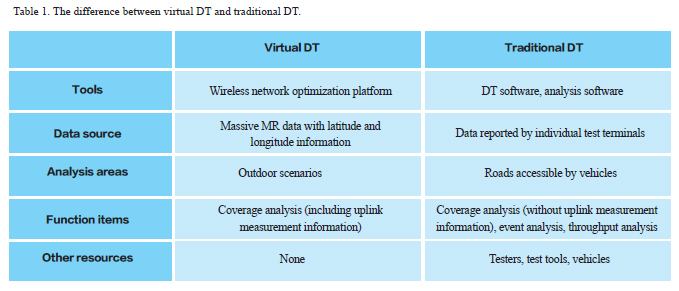Virtual DT: An Innovation in Drive Test for Cost-Efficiency
With the rapid development of telecom businesses, it is more difficult and expensive to optimize networks in a traditional way due to the expanding network size, increasing types of services, and a growing number of users. There is a pressing need for a revolutionary solution to network optimization. ZTE has launched its virtual drive test (DT) solution that fundamentally transforms traditional network optimization by building high-quality networks cost efficiently.
Drive test is indispensable in network optimization. In a traditional drive test, professional testers drive along target routes and collect network coverage data through continuous and field tests with special instruments. The traditional drive test is inefficient and accounts for about 45% of the total cost for the network optimization project. Moreover, the test has specific requirements on test instruments and testing skills, and also the collected data has a certain limitation.
ZTE’s innovative virtual DT technology changes fundamentally the way of drive test and brings considerable benefits to operators in terms of cost and efficiency. Based on real user data, virtual DT obtains and analyzes massive wireless network MR data with latitude and longitude information, associates them with call detail trace (CDT), fits them to defined routes, and produces through the GIS presentation the same effects as a traditional DT does. Virtual DT provides wireless network coverage analysis solution without the need of actual drive test. The solution covers wider areas and is more close to real conditions of end users.
Virtual DT is implemented in the following steps:
● Define routes: Based on the imported maps and historical DT data, virtual DT divides complex urban roads into grids and defines them.
● Extract data: Virtual DT selects and filters the data with AGPS information from massive MR data continuously reported by mobile phones of people on the roads or in running vehicles, associates them with CDT, and matches them to the road grids. Because of the high precision of AGPS data, the AGPS-based user location can really reflect quality of the current network.
● Present the result: Based on the coverage shown on the GIS map, abnormal events, and other related information, virtual DT puts the filtered data into statistical analysis and accurately evaluates network performance.
ZTE’s virtual DT technology allows any person and terminal to be a data source for virtual drive test. This greatly minimizes DT’s dependence on testers and instruments, enhances cost competitiveness, and really makes possible drive test anytime and anywhere.
Virtual DT is a leading innovative wireless coverage analysis solution aimed at helping operators improve their network O&M efficiency. The solution can partly replace traditional DT. ZTE’s VDT focuses on wireless coverage analysis and RF optimization. The differences between virtual DT and traditional DT are shown in Table 1.

The wireless network optimization platform is more stable than DT software and analysis software. Virtual DT uses more abundant data sources covering a wider range of network issues, and its areas for analysis are wider than those of traditional DT. Virtual DT supports key indicators analysis. It can be completed without additional labor or vehicle costs.
The LTE network O&M optimization project of an operator has 3051 eNodeBs in total (669 of them in the core areas). Because of the growing number of users and the increasingly active online users, coverage has gradually become one of the main bottlenecks that affect network quality. To operate and maintain the network efficiently, the operator introduced ZTE’s revolution of network performance management (RoNPM) service that could analyze and optimize network coverage for three months in the core areas using the virtual DT technology.

A total of 48 areas with coverage problems were found during the three months of coverage analysis and optimization. 33 areas with the coverage problems were under RF optimized adjustment, and 15 new sites were suggested to be built. With the introduction of ZTE’s virtual DT solution, the operator reduced the number of monthly average drive tests to four tests/cluster from the previous eight tests/cluster. This greatly reduces DT costs as shown in Table 2. ZTE’s virtue DT technology allows operators to significantly improve their network quality and double their DT efficiency while reducing costs by 50%.